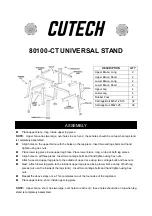
DL4300 Appliance
Remove-VirtualStandby
469
Option
Description
If none are provided, then the logged-on user's
credentials will be used.
-password
Optional. Password to the remote Core host
machine. If you specify a password, you also have to
provide a log on.
If none are provided, then the logged-on user's
credentials will be used.
-all
Remove all archives associated with this Core.
-id
The identifier of the archive that you want to remove.
To list more than one archive, separate each ID with
a space.
Example:
Remove several scheduled archives from the local Core:
>Remove-ScheduledArchive -ids 799138c8-3dfc-4398-9711-1823733c2a31, 26c29bb7-b320-47f5-b5a8-dffc49f50e25
Parent topic
Remove-VirtualStandby
If you scheduled Rapid Recovery to continuously export data to a virtual machine, then you can use the
Remove-
VirtualStandby
PowerShell command to cancel and delete this scheduled job.
Usage
The usage for the command is as follows:
Remove-VirtualStandby -core [host name] -user [login] -password [password] -all | -protectedserver [name(s) | IP ad
dress]
Command Options
The following table describes the options available for the
Remove-VirtualStandby
command:
Table 229. Remove-VirtualStandby command options
Option
Description
-?
Display this help message.
-core
Optional. Remote Core host machine IP address
(with an optional port number). By default the
connection is made to the Core installed on the local
machine.
-user
Optional. User name for the remote Core host
machine. If you specify a user name, you also have
to provide a password.
If none are provided, then the logged-on user's
credentials will be used.
















































